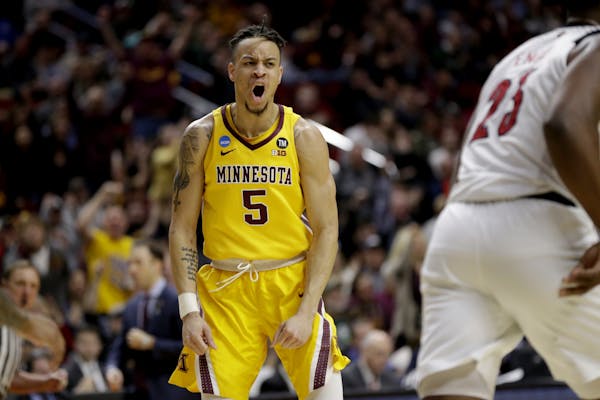The dizzying pace of change in the modern world allows for multiple instances — daily? — that force us to question preexisting norms and wonder if our line of thinking still holds true.
This presents a formidable challenge to our brain circuitry, which has spent years perfecting shortcuts to answer seemingly routine questions in order to save the real power for the more complex ones.
Sports are particularly prone to this because certain things have been seemingly hard-wired into those of us of a particular minimum age for as long as we can remember.
Runner on second, nobody out: If nothing else, at least move the runner over. (Wait, that's not the plan any more?)
Going for it on 4th down is risky. (Hmm, turns out that punting in some cases is an even bigger risk and certainly a worse strategy. Who knew?)
As Amir Coffey contemplated his basketball future over the last couple months, eventually deciding Wednesday to stay committed to turning pro, I found myself falling into one of these old conventional wisdom traps. Basically, I couldn't imagine why Coffey would leave after his junior year.
Sure, he had a nice season and an especially strong finish, but wasn't the fact that Coffey did not get invited to the NBA combine a pretty good indicator that he was unlikely to be drafted (or would be a second-rounder at best)?
And wouldn't he have a much better chance of getting drafted — particularly in the first round, which comes with the instant millionaire status of a guaranteed multi-year contract — if he came back and had a great senior season?
That last part, though, is where the conventional wisdom playbook is becoming quickly outdated. While Coffey almost certainly will not be a first-round pick this year, he almost certainly would not be a first-round pick next year if recent trends continue.
In both the 2017 and 2018 NBA drafts, only two college seniors were picked in the first round of each — and none of them were picked higher than No. 21 overall. The NBA.com consensus mock draft for this year's selection process in a few weeks features zero seniors. Instead, it has eight freshmen, three sophomores, two juniors and an international player.
If you aren't a top prospect by at least your junior year (and often even sooner), NBA teams are increasingly disinterested in investing coveted first-round picks on you.
Coffey will turn 22 just before this year's draft and, had he stayed for his senior year, would have been 23 by the time he was eligible next year. The average age of all NBA draft picks these days is a tick under 21, and top-15 picks, on average, have not yet turned 20.
At the same time, there are an increasing number of ways for fringe prospects to get professional seasoning and work their way up — a nod to how teams are increasingly scouring their options for young, cost-controlled talent, particularly someone like Coffey who has the size to play on the wing but can also handle the ball.
The NBA's G League operates more and more like a minor league for various teams. The NBA starting with the 2017-18 season instituted two-way contracts — two per team — where roster hopefuls can spend most of their time in the G-League but also up to 45 days with an NBA team (with increased pay).
Second round picks, too, are increasingly getting guaranteed contracts. And there are numerous overseas options. Not all are lucrative, but plenty of them are.
Coffey would have helped the Gophers had he returned for his senior year, and his presence might have elevated a good team into something special. But as a prospect?
He's probably better off starting his pro career now, even if he doesn't get drafted.
Just like the Twins are better off trying to drive in the guy from second base and the Vikings are well-served going for it more frequently on fourth down.
Feel free to adjust your mental shortcuts accordingly.


